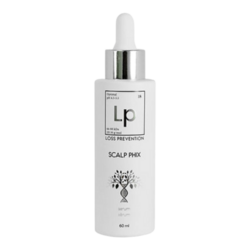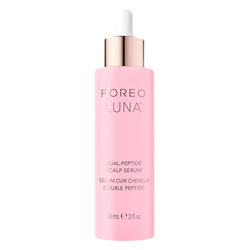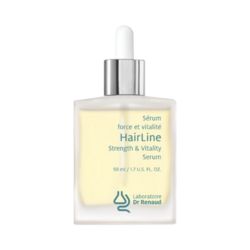Tomorrow’s Hair Growth: Science, Tech, and Innovation

The future of hair restoration is evolving far beyond topical formulas and traditional treatments. A new wave of biotechnology, genetic medicine, AI-powered diagnostics, and wearable innovations is transforming how we understand and regrow hair. These advancements are delivering safer, faster, and more personalized solutions for individuals experiencing thinning, shedding, or pattern-related loss.
This shift marks a powerful moment in modern hair science, where technology and biology intersect to create meaningful long-term results..
This new era of innovation is driven by scientific breakthroughs that target the root causes of hair loss—from follicle dormancy to inflammation to genetic predispositions. As research accelerates, consumers are gaining access to smarter, more effective technologies that treat hair concerns at their source.
Below, we explore how biotech, molecular medicine, artificial intelligence, and next-generation wearables are transforming the future of hair regrowth.
 |
The Biotech Revolution in Hair Restoration
Biotechnology has emerged as one of the most promising fields for restoring scalp and follicle vitality. Rather than providing temporary improvements, modern biotech treatments work directly at the cellular level to activate dormant follicles and repair the biological environment that supports growth.
This deeper, cell-focused approach is shifting hair regrowth from short-term fixes toward long-term follicular repair.
Lab-Grown Peptides and Growth Factors
One of the biggest innovations in hair science is the development of bioengineered peptides—lab-grown molecules designed to stimulate follicle activity.
These peptides can:
-
boost cell turnover
-
encourage follicle communication
-
improve density and thickness of existing hair
Additionally, biotech growth factors are engineered to mimic natural cellular signals that tell hair follicles to enter the growth phase. This can help revive weakened or miniaturized follicles and encourage healthier hair development.
Exosomes and Regenerative Nanovesicle
One of the most exciting developments is the rise of lab-grown peptides—engineered molecules designed to signal follicles into increased activity.
These peptides can:
-
boost cellular turnover
-
enhance follicle-to-follicle communication
-
improve density and thickness
Biotech growth factors work similarly, mimicking the body's natural growth signals to encourage follicles to enter the active phase. This can help revive weakened or miniaturized follicles over time.
Stem-Cell–Derived Therapies
 |
Modern stem-cell methods focus on:
Biotech innovation is steadily moving the industry toward proactive, regenerative solutions. |
C$ 143.00
C$ 45.00
C$ 72.00
C$ 74.90
|
“Biotech innovation is shifting regrowth from short-term fixes to long-term follicular repair.”
|
Gene-Based & Molecular Therapies
|
These emerging therapies aim to correct the biological triggers behind thinning and pattern loss, reshaping what long-term regrowth may look like in the future. |
 |
CRISPR and Genetic Editing
Researchers are exploring CRISPR gene-editing tools as a way to modify genetic patterns responsible for thinning. Although still in its early stages, this technology may eventually:
-
prevent follicle miniaturization
-
block pathways linked to hair loss
-
support long-term growth stability
While not yet available for consumers, the research is progressing rapidly.
| *CRISPR (short for “clustered regularly interspaced short palindromic repeats”) is a technology that research scientists use to selectively modify the DNA of living organisms. CRISPR was adapted for use in the laboratory from naturally occurring genome editing systems found in bacteria. |
Personalized Genetic Profiling
Today, consumers can access genetic tests that uncover predispositions to thinning or shedding. These tests examine markers linked to:
-
hormonal sensitivity
-
inflammation
-
nutrient processing
-
follicle deterioration
With this information, individuals can create targeted, biologically aligned regrowth plans.
Molecular “Switch” Therapies
Scientists are identifying molecules that function like biological “on/off” switches for growth. These treatments can:
-
activate dormant follicles
-
increase the number of active growth sites
-
reduce inflammation around the follicle
Some of these treatments work topically, while others use microneedles or skin patches to deliver molecules deeper into the scalp for stronger results.
Smart Diagnostics, AI-Powered Assessment & At-Home Technologies
AI Scalp Scanners and Digital Follicle Mapping
 |
AI-powered scalp scanners provide a detailed, data-driven view of scalp and follicle health. These systems analyze follicle density, early miniaturization, hydration levels, oil production, and scalp buildup, offering a deeper understanding of what’s happening beneath the surface. With digital follicle mapping, experts can create a visual “blueprint” of the scalp, making it easier to track progress over time and refine personalized treatment plans with scientific precision. |
Predictive Analytics for Hair Loss Progression
Machine learning models can now predict future thinning patterns before they become visible, allowing for earlier intervention and more effective regrowth outcomes. By analyzing density changes, shedding trends, and biological markers, these tools help create highly targeted treatment strategies that address concerns before they escalate, saving both time and frustration for anyone experiencing hair loss.
Virtual & Remote Hair Health Platforms
Tele-trichology and digital platforms make expert guidance more accessible through remote scalp evaluations, customized treatment plans, and AI-assisted progress tracking. When combined with at-home devices, these tools give users greater control and confidence in their regrowth journey, making it easier to stay consistent and achieve visible, long-term improvements.
Wearable & At-Home Hair Growth Technologies
Wearable hair-growth devices are becoming powerful additions to modern regrowth routines. Technologies such as LED and LLLT therapy, microcurrent stimulation, and ultrasound enhancement support follicle activity and improve density and strand strength when used consistently.
Smart patches and targeted delivery systems further boost results by improving absorption and delivering ingredients precisely where they’re needed—all with minimal irritation. Newer wearables are also more compact, discreet, and comfortable, making them easy to use while working or relaxing. The aim is simple: to make consistent hair regrowth effortless and seamlessly integrated into daily life.
| *LLLT (Low-Level Laser Therapy) is a non-invasive treatment that uses low-intensity light energy to help stimulate cellular activity , improve circulation, and support hair growth or tissue repair—without heat, pain, or downtime. |
C$ 84.00
C$ 59.00
C$ 35.50
“The future isn’t about isolated treatments—it’s about coordinated, science-backed systems.”
A New Era for Hair Health
The next generation of hair restoration is rooted in personalization, biotechnology, and advanced digital tools. With breakthroughs in gene-based therapies, AI insights, and wearable stimulation technology, users now have access to treatments that directly address the biological causes of thinning and loss.
As research evolves, the future promises:
earlier detection
safer, more targeted solutions
stronger, longer-lasting results
deeply personalized regrowth strategies
For anyone navigating thinning or shedding, the future of hair health has never been more advanced—or more hopeful.






